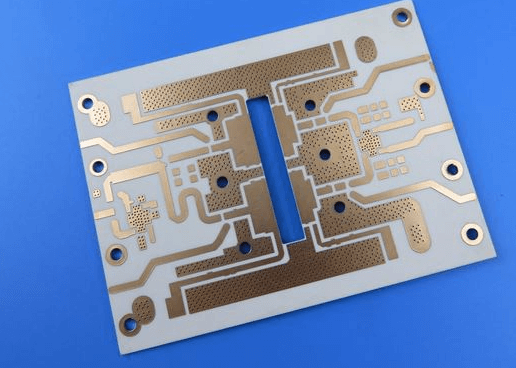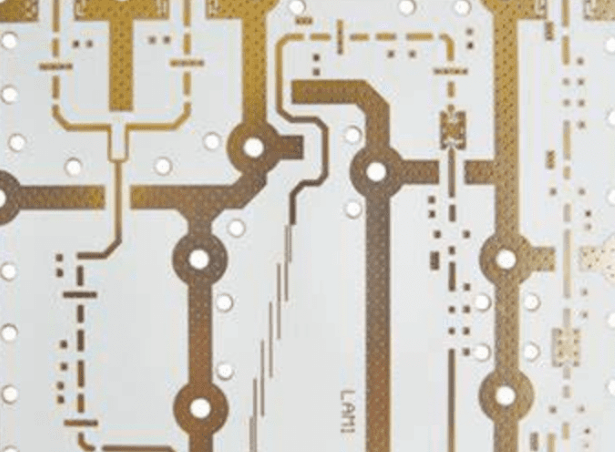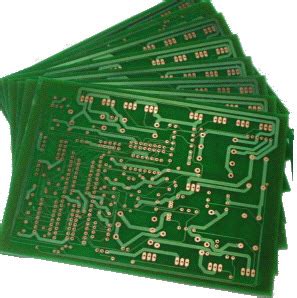Rogers 4003c pcb
Advantages Of Using Rogers 4003C PCB In High-Frequency Applications
Rogers 4003C PCB is a high-performance material widely recognized for its exceptional properties in high-frequency applications.
One of the primary advantages of using Rogers 4003C PCB is its low dielectric constant,
which is crucial for maintaining signal integrity in high-frequency circuits. This low dielectric constant minimizes signal loss and ensures that the signal travels through the circuit with minimal distortion, making it an ideal choice for applications such as RF and microwave communications.
In addition to its low dielectric constant, Rogers 4003C PCB also boasts a low dissipation factor.
The dissipation factor is a measure of the energy lost as heat in the dielectric material. A lower dissipation factor indicates that less energy is lost, which is particularly important in high-frequency applications where energy efficiency is paramount. This characteristic not only enhances the performance of the circuit but also contributes to the longevity and reliability of the electronic components.
Another significant advantage of Rogers 4003C PCB is its excellent thermal stability.
High-frequency applications often generate substantial amounts of heat, and materials that cannot withstand these temperatures may degrade over time, leading to circuit failure. Rogers 4003C PCB, however, maintains its properties even at elevated temperatures, ensuring consistent performance and reducing the risk of thermal-related failures. This thermal stability is particularly beneficial in applications such as aerospace and defense, where reliability is critical.
Moreover, Rogers 4003C PCB exhibits superior dimensional stability.
Dimensional stability refers to the material’s ability to maintain its size and shape under varying environmental conditions. In high-frequency applications, even slight changes in the dimensions of the PCB can lead to significant performance issues. Rogers 4003C PCB’s excellent dimensional stability ensures that the circuit remains stable and performs consistently, regardless of changes in temperature or humidity.
Furthermore, the material’s ease of fabrication is another noteworthy advantage.
Rogers 4003C PCB can be processed using standard PCB manufacturing techniques, which simplifies the production process and reduces costs. This ease of fabrication, combined with its high performance, makes Rogers 4003C PCB a cost-effective solution for high-frequency applications. Manufacturers can produce high-quality circuits without the need for specialized equipment or processes, which can be both time-consuming and expensive.
Additionally, Rogers 4003C PCB is known for its excellent mechanical properties.
It offers a good balance of rigidity and flexibility, making it suitable for a wide range of applications. The material’s mechanical strength ensures that the PCB can withstand physical stresses during assembly and operation, further enhancing its reliability. This robustness is particularly important in applications where the PCB may be subjected to mechanical vibrations or shocks.
Lastly, the material’s compatibility with lead-free soldering processes is an important consideration in today’s environmentally conscious manufacturing landscape.
Rogers 4003C PCB can be used with lead-free soldering techniques without compromising its performance, making it a sustainable choice for high-frequency applications. This compatibility ensures that manufacturers can meet regulatory requirements and reduce their environmental impact while still achieving high-performance results.
In conclusion, Rogers 4003C PCB offers numerous advantages for high-frequency applications, including a low dielectric constant, low dissipation factor, excellent thermal and dimensional stability, ease of fabrication, superior mechanical properties, and compatibility with lead-free soldering processes. These attributes make it an ideal choice for a wide range of high-frequency applications, from RF and microwave communications to aerospace and defense. By choosing Rogers 4003C PCB, manufacturers can achieve high performance, reliability, and cost-effectiveness in their high-frequency circuits.

Design Tips For Optimizing Performance With Rogers 4003C PCB
When designing printed circuit boards (PCBs) for high-frequency applications, the choice of substrate material is crucial. Rogers 4003C is a popular choice among engineers due to its excellent electrical properties and mechanical stability. To optimize performance with Rogers 4003C PCB, several design considerations must be taken into account. Understanding these factors can significantly enhance the functionality and reliability of the final product.
Firstly, it is essential to consider the dielectric constant (Dk) of Rogers 4003C, which is approximately 3.38.
This relatively low and stable Dk ensures minimal signal loss and consistent signal integrity, making it ideal for high-frequency applications. However, to fully leverage this property, designers must carefully manage the impedance of the transmission lines. Impedance control is critical in high-frequency circuits to prevent signal reflections and losses. Utilizing tools such as impedance calculators and simulation software can aid in achieving the desired impedance levels.
Moreover, the thermal properties of Rogers 4003C should not be overlooked.
With a low coefficient of thermal expansion (CTE), this material exhibits minimal dimensional changes with temperature variations, ensuring stable performance across a wide temperature range. This characteristic is particularly beneficial in applications subjected to harsh environmental conditions. To further enhance thermal management, designers can incorporate thermal vias and heat sinks, which help dissipate heat and maintain the integrity of the PCB.
In addition to thermal considerations, the mechanical properties of Rogers 4003C contribute to its robustness.
The material’s high peel strength ensures strong adhesion between the copper layers and the substrate, reducing the risk of delamination. This is particularly important in multilayer PCBs, where mechanical stability is paramount. To optimize mechanical performance, designers should pay attention to the layout and stacking of the layers, ensuring even distribution of stress and minimizing potential points of failure.
Another critical aspect of designing with Rogers 4003C is the selection of appropriate surface finishes.
The choice of finish can impact both the electrical performance and the manufacturability of the PCB. For high-frequency applications, finishes such as Electroless Nickel Immersion Gold (ENIG) or immersion silver are often preferred due to their excellent conductivity and smooth surface profiles. These finishes help maintain signal integrity and reduce insertion loss, which is vital for high-speed signal transmission.
Furthermore, the design of the PCB layout plays a significant role in optimizing performance.
Careful consideration of trace width, spacing, and routing can minimize signal interference and crosstalk. Utilizing ground planes and proper grounding techniques can further enhance signal integrity by providing a stable reference point and reducing electromagnetic interference (EMI). Additionally, designers should avoid sharp bends and abrupt changes in trace direction, as these can cause signal reflections and degrade performance.
Lastly, it is important to collaborate closely with the PCB manufacturer during the design process.
Manufacturers can provide valuable insights into the capabilities and limitations of Rogers 4003C, helping to ensure that the design is both manufacturable and cost-effective. Engaging in early communication with the manufacturer can also help identify potential issues and address them before they become critical problems.
In conclusion, optimizing performance with Rogers 4003C PCB requires a comprehensive understanding of its electrical, thermal, and mechanical properties. By carefully managing impedance, thermal dissipation, mechanical stability, surface finishes, and layout design, engineers can fully leverage the advantages of this material. Collaboration with PCB manufacturers further enhances the likelihood of success, resulting in high-performance, reliable PCBs suitable for demanding high-frequency applications.

Comparing Rogers 4003C PCB To Other High-Frequency Materials
Rogers 4003C PCB is a high-frequency laminate material that has garnered significant attention in the electronics industry due to its exceptional performance characteristics. When comparing Rogers 4003C to other high-frequency materials, several factors come into play, including dielectric constant, thermal management, mechanical stability, and cost-effectiveness. Understanding these aspects can help engineers and designers make informed decisions about the most suitable material for their specific applications.
One of the primary attributes of Rogers 4003C is its low dielectric constant, which is typically around 3.38.
This low dielectric constant is crucial for high-frequency applications as it minimizes signal loss and ensures signal integrity. In comparison, other high-frequency materials such as FR-4, which is commonly used in standard PCBs, have a higher dielectric constant, usually around 4.5. This higher dielectric constant can lead to greater signal attenuation and reduced performance in high-frequency circuits. Therefore, Rogers 4003C is often preferred in applications where maintaining signal integrity is paramount.
In addition to its dielectric properties, Rogers 4003C also excels in thermal management.
The material has a low coefficient of thermal expansion (CTE), which means it can withstand temperature variations without significant dimensional changes. This stability is particularly important in high-frequency applications where thermal cycling can occur. Other materials, such as PTFE-based laminates, also offer good thermal management but can be more challenging to process due to their softer nature. Rogers 4003C strikes a balance by providing excellent thermal stability while being easier to handle during manufacturing processes.
Mechanical stability is another critical factor when comparing high-frequency materials.
Rogers 4003C offers robust mechanical properties, including high tensile strength and dimensional stability. These characteristics make it suitable for applications that require reliable performance under mechanical stress. In contrast, materials like ceramic-filled PTFE can be more brittle and prone to cracking under mechanical loads. This makes Rogers 4003C a more versatile choice for a wide range of high-frequency applications, from telecommunications to aerospace.
Cost-effectiveness is always a consideration in material selection.
While Rogers 4003C is generally more expensive than standard FR-4 materials, it is often more cost-effective than other high-frequency laminates like PTFE-based materials. The ease of processing and the reduced need for specialized manufacturing techniques contribute to its overall cost-effectiveness. Additionally, the long-term reliability and performance benefits of Rogers 4003C can offset the initial material costs, making it a prudent investment for high-frequency applications.
Furthermore, Rogers 4003C offers excellent compatibility with standard PCB manufacturing processes.
This compatibility simplifies the transition from design to production, reducing lead times and potential manufacturing issues. Other high-frequency materials may require specialized processes, which can increase production complexity and costs. The ability to use standard processes with Rogers 4003C enhances its appeal for both prototyping and large-scale production.
In conclusion, when comparing Rogers 4003C PCB to other high-frequency materials, it becomes evident that Rogers 4003C offers a compelling combination of low dielectric constant, excellent thermal and mechanical stability, and cost-effectiveness. These attributes make it a preferred choice for high-frequency applications where performance and reliability are critical. While other materials may offer specific advantages, the overall balance of properties provided by Rogers 4003C makes it a versatile and practical option for a wide range of high-frequency electronic designs.

Manufacturing Challenges And Solutions For Rogers 4003C PCB
Rogers 4003C is a high-frequency laminate material widely used in the manufacturing of printed circuit boards (PCBs) for applications requiring superior electrical performance. However, the manufacturing of Rogers 4003C PCBs presents several challenges that must be addressed to ensure optimal performance and reliability. Understanding these challenges and implementing effective solutions is crucial for manufacturers aiming to leverage the benefits of this advanced material.
One of the primary challenges in manufacturing Rogers 4003C PCBs is the material’s sensitivity to temperature variations.
Unlike traditional FR-4 materials, Rogers 4003C has a lower coefficient of thermal expansion (CTE), which can lead to issues during the soldering process. Excessive heat can cause the laminate to expand and contract, potentially leading to delamination or warping. To mitigate this, manufacturers must carefully control the thermal profile during soldering, ensuring that the temperature ramp-up and cool-down rates are gradual. Additionally, using low-temperature soldering techniques and materials can help minimize thermal stress on the laminate.
Another significant challenge is the material’s mechanical properties, which differ from those of conventional PCB materials.
Rogers 4003C is more brittle and less flexible, making it susceptible to cracking and damage during handling and processing. To address this, manufacturers should implement stringent handling protocols, including the use of soft gloves and anti-static materials to prevent physical damage. Automated handling systems can also reduce the risk of human error and ensure consistent handling practices.
The drilling process for Rogers 4003C PCBs also poses unique challenges.
The material’s hardness can cause rapid tool wear, leading to burr formation and poor hole quality. To overcome this, manufacturers should use high-quality, diamond-coated drill bits designed specifically for high-frequency laminates. Additionally, optimizing drilling parameters such as spindle speed, feed rate, and peck drilling can enhance hole quality and extend tool life. Regular tool maintenance and replacement schedules are essential to maintain consistent performance.
Etching Rogers 4003C PCBs requires careful consideration of the material’s chemical resistance.
The laminate’s surface can be more susceptible to chemical attack compared to traditional materials, necessitating the use of specialized etching solutions and processes. Manufacturers should conduct thorough testing to determine the optimal etching parameters and ensure that the chosen chemicals do not compromise the laminate’s integrity. Implementing robust quality control measures, such as regular inspection and testing of etched PCBs, can help identify and address any issues early in the manufacturing process.
Adhesion between the Rogers 4003C laminate and other materials, such as copper, is another critical factor.
Poor adhesion can lead to delamination and compromised electrical performance. To enhance adhesion, manufacturers should employ surface treatment techniques such as plasma cleaning or micro-etching to increase the surface roughness of the laminate. Additionally, using high-quality bonding materials and ensuring proper lamination pressure and temperature can improve the bond strength between layers.
In conclusion, while the manufacturing of Rogers 4003C PCBs presents several challenges, these can be effectively managed through careful process control, specialized equipment, and rigorous quality assurance practices. By addressing the material’s sensitivity to temperature, mechanical properties, drilling requirements, etching considerations, and adhesion issues, manufacturers can produce high-performance PCBs that meet the demanding requirements of high-frequency applications. As technology continues to advance, ongoing research and development will likely yield new solutions and techniques to further optimize the manufacturing process for Rogers 4003C PCBs, ensuring their continued relevance and utility in the electronics industry.







